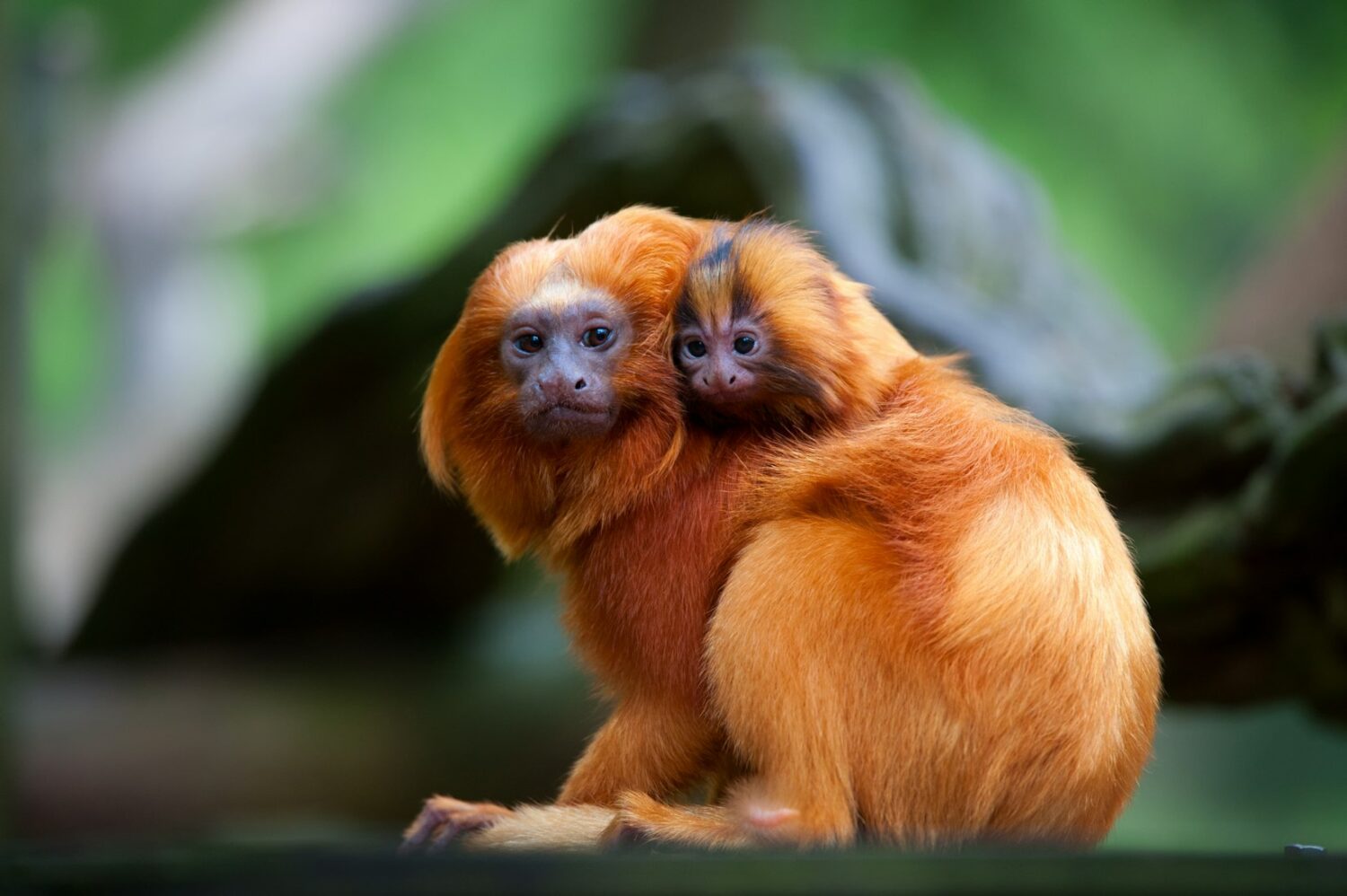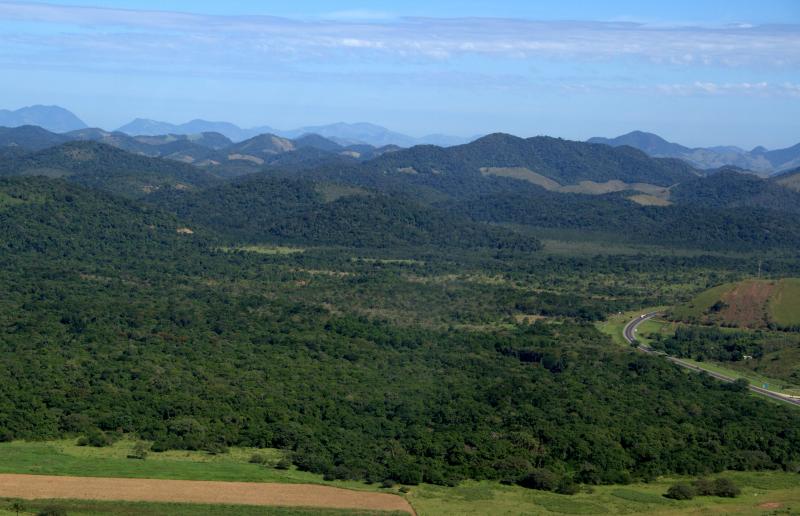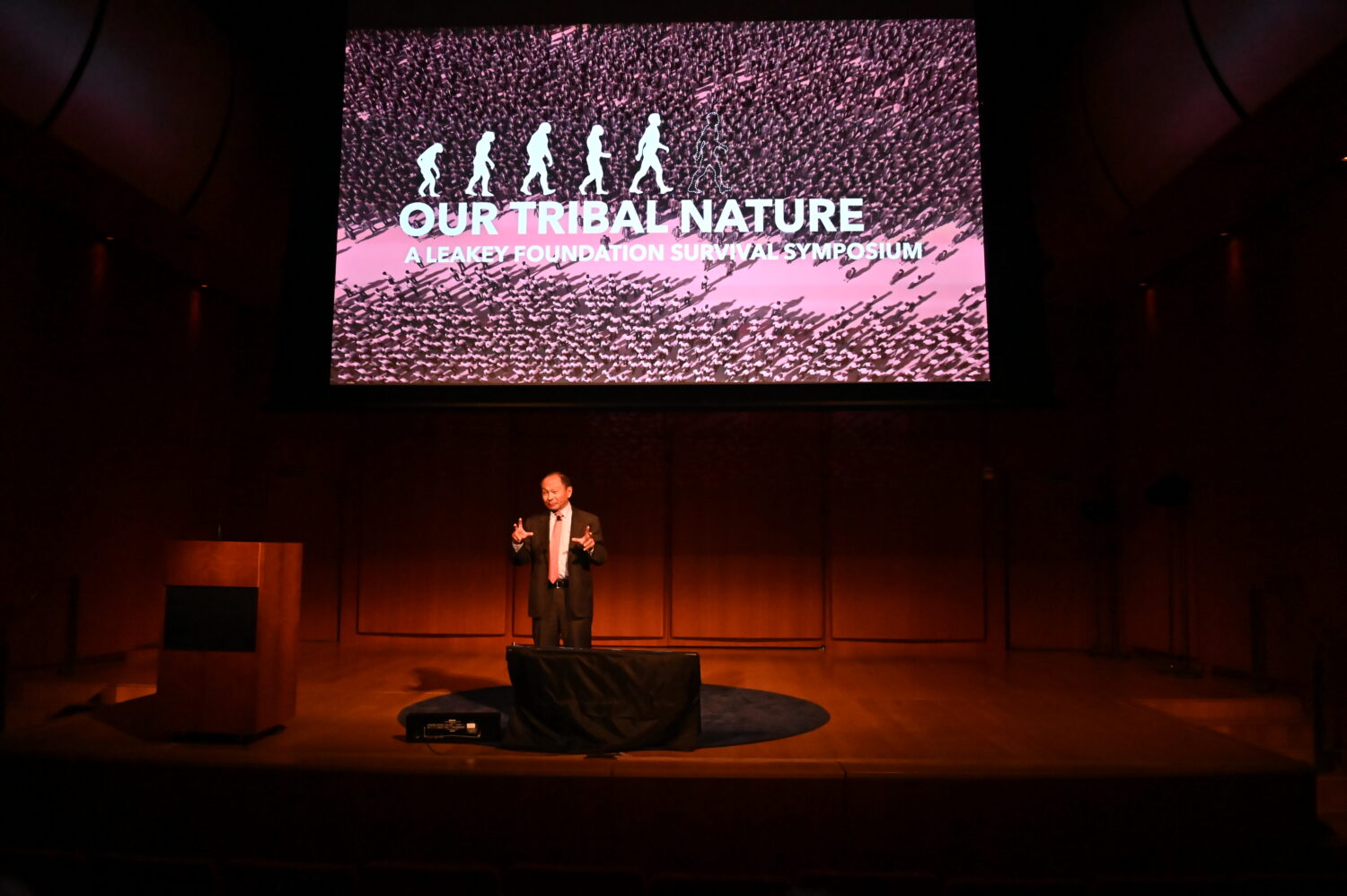Survival

By Meghan Khalsa
Meet the golden lion tamarin, Leontopithecus rosalia, a small monkey that lives only in lowland forests along Brazil’s Atlantic coast.
Golden lion tamarins are social and energetic primates. They live in small groups of two to eight, usually made up of one male and several females. They form strong bonds within their family groups and care for their young cooperatively. Social interactions include playful wrestling and huddling together for warmth or protection. They are active and lively during the day, feeding primarily on fruits and insects. Importantly, they mainly move through the trees, spending little time on the ground.
A species on the edge
The golden lion tamarin has been on the IUCN Red List of Threatened Species since 1982. The destruction of Brazil’s forests fragmented the golden lion tamarins’ habitat into isolated patches, limiting their ability to access food or find new mates and nesting sites. At one point, only 8% of their range remained intact, and the population plummeted to fewer than 200 individuals, bringing the golden lion tamarin close to extinction.
Thanks to decades of effort to protect and restore these monkeys and their forest habitat, there is hope.

Restoring the forest
Located within a critical part of the golden lion tamarin’s native range, the Poço das Antas Biological Reserve was created in 1974 and covers 5,052 hectares of Atlantic forest in Brazil’s Rio de Janeiro State. The reserve is designed to protect the natural environment and prevent human interference. It is one of the most critical sites for conserving the golden lion tamarins’ habitat and helping avoid extinction.
The Poço das Antas Biological Reserve and the União Biological Reserve provide protected areas for the monkeys. Much is being done to help increase the golden lion tamarin population and slow, if not entirely prevent, the loss of its native habitat. They have seen the population steadily increase.
Hope for the golden lion tamarin
According to a 2022/2023 census, there are now an estimated 4,800 golden lion tamarins in the wild. Efforts to plant trees and form botanical bridges between isolated forest patches have been successful, creating reconnected habitats for the monkeys and other species as well.
Dr. Stuart L. Pimm, the Doris Duke Chair of Conservation Ecology at Duke University, has spent years working to conserve and rebuild the golden lion tamarins’ native habitat. Through his nonprofit, SavingNature, Dr. Pimm has worked alongside local organizations in Brazil to lead reforestation efforts and create wildlife corridors to reconnect the broken forest. Over the past 20 years, these efforts have significantly improved tree growth and restored much of the tamarins’ habitat. While still endangered, these initiatives have greatly enhanced the golden lion tamarins’ chances for a brighter future. He spoke about this work in a 2016 Survival Symposium lecture.
In celebration of Earth Day, we’re excited to share an excerpt from Dr. Pimm’s original 2016 Survival lecture focused on the golden lion tamarins at Poço das Antas Biological Reserve, complemented by new insights and perspectives recorded this month. Don’t miss the chance to hear Dr. Pimm’s latest thoughts on the survival of the golden lion tamarin.
Survival is a Leakey Foundation program focused on using evolutionary science to understand and address the biggest challenges facing humanity today. This program is made possible by the generous support of the Wirthlin family.



